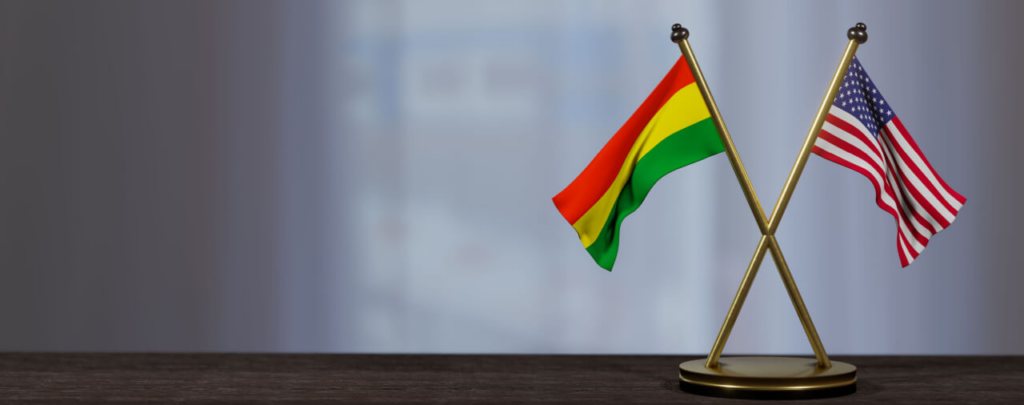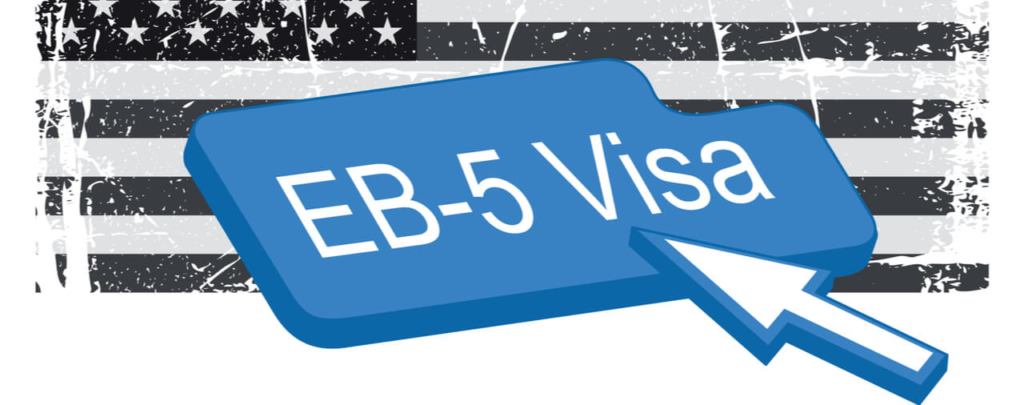Introduction
On February 9, 2017, the United States Court of Appeals for the Ninth Circuit rendered a decision in State of Washington v. Trump, No. 17-35105 [PDF version]. The case regarded the U.S. government’s appeal of the temporary restraining order (TRO) issued by the United States District Court for the Western District of Washington [PDF version] against portions of President Donald Trump’s Executive Order titled “Protecting the Nation From Foreign Terrorist Entry Into the United States” [PDF version]. The Ninth Circuit denied the Government’s emergency motion for a stay of the TRO pending appeal.
Before reading this article, please see my full article on the Ninth Circuit decision to learn about the court’s reasoning [see article]. Please also see my discussion of the legal underpinning of the Executive Order [see blog]. In this post, I will offer my analysis and opinion of the decision, as well as how I believe that the Trump Administration should proceed.
Analysis
In a previous blog post, I defended the legality of the contested provisions of the Executive Order except for its application to lawful permanent residents (LPRs) [see blog]. Accordingly, I disagree with most aspects of the Ninth Circuit’s decision to deny the Government’s stay motion against the temporary restraining order (TRO) against those aspects of the Executive Order. Furthermore, I would be troubled to see certain aspects of the Ninth Circuit’s reasoning on the merits make it into a precedent decision by either the Ninth Circuit or ultimately, the Supreme Court of the United States. I will offer a non-comprehensive overview of some of the aspects of the decision that I find most troubling.
1. Omission of Discussion of Section 212(f)
The decision by the Ninth Circuit omitted any discussion of section 212(f) of the Immigration and Nationality Act (INA). We recently posted a detailed examination of the statute [see article] and how it applies to the Executive Order [see blog]. Section 212(f) is the statute under which President Trump issued his Executive Order. The provision gives the President broad authority to suspend the entry of any alien or of any class of aliens if the President determines that the entry of such alien or class of aliens would be detrimental to the interests of the United States. As a result of the failure of the Ninth Circuit to analyze the statute, which empowers the President to suspend the entry of individual aliens and classes of aliens, it is difficult to ascertain why the Ninth Circuit offered so little deference to the President’s determination.
This problem was discussed in detail by Josh Blackman, a noted law professor at South Texas College of Law Houston (note that Blackman states in the article that he disagrees with the Executive Order as a matter of policy, highlighting that one can disagree with aspects of the Ninth Circuit decision while also disagreeing with President Trump’s Executive Order). Blackman noted that in a concurring opinion in Youngstown Sheet & Tube Co. v. Sawyer, 343 U.S. 579 (1952) [PDF version], Justice Robert Jackson explained that the President’s authority is “at its maximum” when acting “pursuant to an express or implied authorization of Congress.”1 Yet, in its decision, the Ninth Circuit applied very high scrutiny to aspects of President Trump’s Executive Order, without explaining the rationale behind its application of that standard of review. Furthermore, as one will find upon reading our section 212(f) article, courts have consistently found that section 212(f) recognizes statutorily the President’s broad authority to suspend entry by proclamation.
2. Breadth of Standing
One of the most concerning aspects to me about the decision is the Ninth Circuit’s discussion of standing. The Ninth Circuit found that the states of Washington and Minnesota had standing to file suit challenging the Executive Order primarily based on the States’ claims that “the Executive Order causes a concrete and particularized injury to their public universities.” Specifically, the Executive Order would make it impossible for visa-holding faculty members and students who are in the United States to depart and then return and for those outside of the United States to return (under most circumstances). It is certainly debatable as to whether the resulting alleged “injury” incurred by public universities is sufficient to establish standing to contest the Executive Order.
Whether a State can have standing to sue over an immigration policy was a major issue in the DAPA litigation. In that case, I agreed with the Fifth Circuit’s determination that Texas had standing to sue the Obama Administration over the DAPA policy [see blog]. However, in Washington v. Trump, I disagree with the Ninth Circuit’s reasoning arguing that Washington State has standing. In particular, one aspect of its decision would make for very troubling precedent were it to be adopted in a for-precedent decision, or worse yet, by the Supreme Court:
The schools cannot consider attractive student candidates and cannot hire faculty from the seven affected countries, which they have done in the past.
It is one thing — debatable as it may be — to argue that Washington has standing based on an injury to its public universities insofar as the Executive Order affects its already-admitted students and current faculty who already have visas. It is another thing entirely to state that universities can have standing based on not being able to consider for admission or employment certain potential alien student or potential faculty members who theoretically would apply but for the Executive Order. “Attractive student candidates” and potential faculty members from the seven named countries covers aliens without any current ties to the United States. Potentially, millions of aliens all across the world could be considered potential students or faculty members of American colleges and universities. It is unclear what limitations the Ninth Circuit recognizes to its standing determination, which seemingly could be extended to allow any number of parties to challenge any restrictive immigration policy on the basis that it could prevent unnamed potential students, professors, or other employees from coming to the United States. Regardless of the ultimate decision of the courts on this issue, I hope that they greatly narrow this rather sweeping conception of standing to challenge immigration restrictions.
3. Due Process
The Ninth Circuit’s reasoning that led it to conclude that Washington was likely to prevail across-the-board on its due process claims is, in my opinion, flawed. However, I will start by noting that I agree that Washington was likely to prevail on its due process claims with regard to lawful permanent residents (LPRs) for reasons I discussed in my blog on the legality of the Executive Order [see blog]. There is ample precedent that an LPR is entitled to due process beyond that which is afforded to an alien who has not been admitted for permanent residency. While section 212(f) allows the President to suspend the “entry” of aliens, as I noted, LPRs are usually not considered to be making a new entry — or under current law, seeking admission — when returning to the United States from a temporary trip abroad. Indeed, that the White House counsel issued a legal opinion that the Executive Order does not apply to LPRs [see article]. However, the Ninth Circuit did not agree with the Government that opinion by White House counsel functioned to preempt further litigation on the LPR issue because it was not binding on the various agencies charged with implementing the Executive Order. On this point I see the Ninth Circuit’s concerns, albeit while noting that the Ninth Circuit has the option of upholding an injunction against only that portion of the Executive Order may be applicable to LPRs, such as what multiple Federal district courts have already done.
Unfortunately, the Ninth Circuit did not stop while it was ahead, and instead found that non-LPRs — including potentially those in the United States unlawfully — are entitled to due process to a degree to which is not supported by the cases that the Ninth Circuit on. In his post, Blackman noted that the Ninth Circuit did not adequately summarize Justice Antony Kennedy’s concurring opinion in citing to Kerry v. Din, 576 U.S. ___ (2015) [PDF version] [see article]. The Ninth Circuit cited to Justice Kennedy’s stating that U.S. residents or institutions petitioning for an alien may have procedural due process rights of their own to assert. Of relevance to the issue of the due process rights of the aliens themselves, however, Ninth Circuit failed to acknowledge that Justice Kennedy held that it was not necessary to reach and did not reach the question of whether the citizen-petitioner could assert the existence of procedural due process rights of the alien seeking a visa, because the State Department did not in any event violate procedural due process in denying a visa based on national security concerns without disclosing reasons for the denial.2 Interestingly, Justice Kennedy cited to the Supreme Court decision in Kleindienst v. Mandel, 408 U.S. 753 (1972) [PDF version], as support of his position of deferring to the Executive Branch (specifically the Department of State’s manner of denying a visa) on this issue, whereas the Ninth Circuit cited to Mandel as evidence that the Executive Order was in fact reviewable.
The Ninth Circuit also cited to cases that we have discussed previously. For example, the decision cites to Landon v. Plasencia, 459 U.S. 21, 33-34 (1982) [PDF version], shortly after suggesting that aliens seeking initial admission may be entitled to due process in being denied entry under the Executive Order. The Ninth Circuit says of Landon that “[t]hese [due process] rights also apply to certain aliens attempting to reenter the United States after traveling abroad.” Indeed, Landon does apply to LPRs, however, as we noted, it explicitly does not apply to non-LPRs [see section].
Blackman notes an interesting precedent Ninth Circuit decision that was not addressed by the court in the instant case: Angov v. Lynch, 788 F.3d 893 (9th Cir. 2013) [PDF version]. Angov cited to another case we discussed in our analysis of section 212(f), Shaughnessy v. United States ex rel. Mezei, 345 U.S. 206, 212 73 S.Ct. 625 97 L.Ed. 956 (1953) [PDF version], in holding that aliens who had entered the United States were entitled to due process in proceedings. However, aliens who had not entered the United States, or in current parlance are applying for admission, are not entitled to such due process. Significantly, the Ninth Circuit in Angov quoted from its previous precedent decision in Kwai Fun Wong v. United States, 373 F.3d 952, 971 (9th Cir. 2004) [PDF version], in order to make a critical distinction of particular relevance to review of the Executive Order: “[A]n alien seeking admission has not ‘entered’ the United States, even if [he] is in fact physically present.” Furthermore, the Ninth Circuit in Angov also cited to Landon to support the assertion that aliens endeavoring to enter the United States are not entitled to due process in entering.
In a final note for this section, the Ninth Circuit attested that the district court that issuing the temporary restraining order (TRO) against the Executive Order had held that Washington was likely to prevail on its due process argument. A careful examination of the district court decision finds that the court did no such thing. In fact, the district court only offered arguments in favor of Washington having standing, and offered no explanation as to why Washington was likely to prevail on the merits. Even for a TRO issued expeditiously, this omission was glaring. It is unclear why the Ninth Circuit read something into the district court TRO that is simply not there.
4. Religious Discrimination Arguments
The Ninth Circuit reserved the question of whether Washington is likely to prevail on its religious discrimination arguments — those being that the Executive Order, formulated with the intent to disfavor Muslims seeking entry, violates the Establishment and Equal Protection clauses of the United States Constitution.
The Ninth Circuit does appear to concede — to some extent — that the Executive Order is facially neutral. In support of reserving the issue, however, the Ninth Circuit cites to a number of Supreme Court cases holding or acknowledging that courts may look to evidence beyond the face of the law under consideration determining its purpose. However, none of the cases that the Ninth Circuit addressed the use of campaign statements to establish the intent of a facially neutral Executive Order issued after the individual in question assumed office. Yet this is the “evidence” upon which the Ninth Circuit relied in concluding that there was a likelihood that the plaintiffs would prevail on the religious discrimination claims. In fact, as noted by Eugene Kontorovich on the Volokh Conspiracy legal blog hosted by the Washington Post, “[t]here is absolutely no precedent for courts looking to a politician’s statements from before he or she took office, let alone campaign promises, to establish any kind of impermissible motive.”3 Kontorovich explains — compellingly — why the Ninth Circuit’s analysis on this point is both disingenuous and likely to have dangerous consequences were it to become precedent (I may explore the issue further in the future). He stated that the result of the Ninth Circuit’s suggestion in the opinion “would mean that Trump is automatically disbarred, from the moment of his inauguration, of exercising certain presidential powers, not because of his actions as president, but because of who he is — that is, how he won the presidency.”
To be sure, President Trump made a number of egregious statements during the campaign which I have addressed in detail on this site [see e.g. post on vetting; post on his victory]. However, President Trump’s Executive Order is, in my opinion, legal on the face (excluding its initial application to LPRs) and in no way orders the implementation of a “religious ban.” For an understanding of why it is not a religious ban, please see my detailed post examining the issue with regard to the now-defunct NSEERS program, which required certain individuals from 25 countries — mostly Muslim-majority countries — to follow certain registration requirements post-admission [see article]. So long as he is President, President Trump’s campaign statements cannot preclude him from using the powers of the presidency in a lawful way. Were he to endeavor to use section 212(f) to suspend the entry of aliens by religious affiliation, the issue should be adjudicated at such time.
As a final note, I have discussed before, and in detail, how favoring certain classes of people eligible for refugee status is in accord with both the law and past precedent [see blog]. Religious persecution is a statutorily specified ground under which an individual can qualify as a “refugee” [see blog].
5. Evidentiary Standard
The Ninth Circuit held that the Government must establish that an alien from one of the seven countries had previously “perpetrated a terrorist attack in the United States” In order to justify the necessity for the immediate implementation of the Executive Order. This is a peculiar standard for a number of reasons. Firstly, it seems peculiar to demand that Americans be subjected to a terrorist attack before the President can act in the interest of national security to prevent such attacks from occurring. Secondly, as I noted in my previous post, a number of individuals from the seven specified countries have been arrested, and even convicted, on terrorism-related charges. That they did not manage to perpetrate any attacks does not seem to be a compelling argument against the President’s exercise of his section 212(f) authority.
In a separate post, Blackman addressed how far afield the Ninth Circuit’s level of scrutiny was in Washington v. Trump. He explained that he is co-counsel in a case titled Defense Distributed v. Department of State, 15-50759 (5th Cir. 2016) [PDF version], wherein the Fifth Circuit upheld a restraint on posting files to the internet containing 3D printing and CNC milling files for gun parts.4 In this case, the Fifth Circuit applied rational basis scrutiny, which did not require the government to establish anything more than the potential harm that could result from posting of the internet files (note that Blackman is co-counsel for the respondents). In light of the Ninth Circuit decision, Blackman explained that he and his co-counsel sent a letter to the Fifth Circuit, suggesting that if Washington’s assertion of harm to its public universities outweighed the President’s national security concerns regarding noncitizens with no constitutional right to enter the United States, surely the Government should be required to muster more evidence in denying the First Amendment rights of U.S. citizens [see letter]. Of course, as Blackman noted, and I concur, the Ninth Circuit’s decision “established an absolutely bonkers standard of review to consider the quasi-rights of non-citizens. If precedents matter, then the actual rights of citizens should be that much harder to violate.”
A Note on the Government’s Position
It must be noted that the Ninth Circuit is not the only one that has made questionable decisions of late. I have already harshly criticized the White House’s bungled implementation of the Executive Order, and I have done so as someone who supports the underlying goals of the policy [see blog]. The new revelation that the White House has posted error-filled versions of Executive Orders on its website is hardly an encouraging sign as to its organization and process.5 During the litigation, President Trump has shown remarkably poor impulse control, continuously railing against individual judges on Twitter and in press statements, and often foreshadowing contradictory legal strategies that the lawyers at the Department of Justice have not decided on. The bungled implementation of the Executive Order has already invited judicial scrutiny and threatened bad precedents. The last thing President Trump should be doing is further incentivizing judges to rule against the lawful aspects of his Executive Order due to his continued use of campaign-style rhetoric. Instead, if the President so desires, he can offer measured and reasonable defenses of his Executive Order, just as he did in a recent address [see blog].
Now that his Attorney General, Jeff Sessions, is in place, it is important for President Trump to take a step back and allow the experts he has appointed to key posts to defend the legality of his immigration action. If he fails to do so, his rash actions may cause further long-term damage to our system of immigration laws.
- Blackman, Josh, “The Ninth Circuit’s Contrived Comedy of Errors in Washington v. Trump: Part I,” lawfareblog.com, (Feb. 13, 2017)
- Id.
- Kontorovich, Eugene, “The 9th Circuit’s dangerous and unprecedented use of campaign statements to block presidential policy,” washingtonpost.com/news/volokh-conspiracy, (Feb. 9, 2017)
- Blackman, Josh, “28(j) Letter Filed in 3D-Printed Gun Case, Citing Washington v. Trump, joshblackman.com, (Feb. 11, 2017)
- Korte, Gregory, “White House posts wrong versions of Trump’s orders on its website,” usatoday.com, (Feb. 14, 2017)




